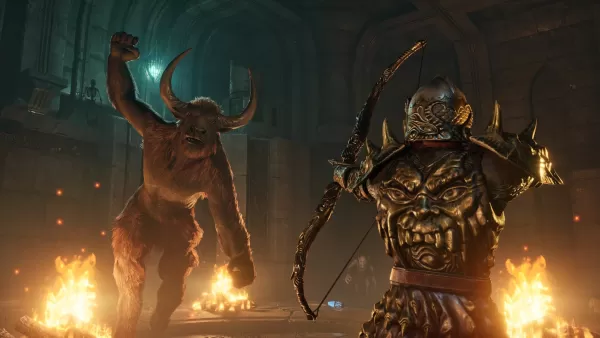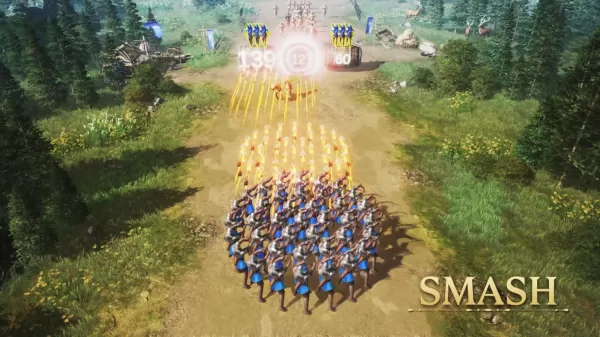When Bethesda unveiled Oblivion Remastered earlier this week, I was astounded. The 2006 journey to Tamriel, once characterized by its quirky, potato-faced characters and blurred, low-resolution landscapes, has been transformed into the most visually stunning Elder Scrolls game to date. My expectations for remasters have been tempered by underwhelming experiences like Mass Effect Legendary Edition and Dark Souls Remastered, which barely differ from their Xbox 360 origins. Yet, seeing the Imperial City, which I explored nearly two decades ago, rendered in Unreal Engine 5 with ray tracing was breathtaking. Beyond the visuals, the game boasts enhancements in combat, RPG systems, and numerous other details. This led me to question whether Bethesda and Virtuos had misnamed it; surely, this should be called Oblivion Remake, not remastered?
It seems I'm not the only one with this thought. Many fans and even Bruce Nesmith, the senior game designer of the original Oblivion, have called it a remake, suggesting the term "remaster" might not fully capture its scope. However, after spending several hours with the game, it became clear that despite its remake-like appearance, Oblivion Remastered fundamentally plays like a remaster.
Oblivion's remake-like appearance stems from Virtuos' extensive work, redesigning every single asset from scratch. This includes every tree, sword, and crumbling castle, bringing the game up to modern graphical standards. The game now features stunning textures, beautiful lighting, and a new physics system that realistically impacts the world with every arrow and weapon strike. While the NPCs are the same characters from 2006, their models are entirely new. This overhaul aims to exceed what players remember and meet 2025's graphical expectations, making it the best-looking Bethesda Game Studios RPG yet. Had I seen it before the remaster rumors, I might have mistaken it for The Elder Scrolls 6.But it's not just about visuals. Combat has been significantly improved, making swordplay feel more engaging than before. The third-person camera now functions effectively, thanks to the addition of a reticule. All menus, from the quest journal to dialogue and lockpicking minigames, have been refreshed. The original leveling system, often criticized, has been replaced with a more logical blend of Oblivion and Skyrim's systems. Sprinting has finally been added. With these substantial visual and gameplay enhancements, it's tempting to label it a remake.
If I had seen Oblivion Remastered before the rumors, I might have believed it was The Elder Scrolls 6. The core issue here is semantics rather than technology, game changes, or project scope. There are no clear industry standards distinguishing remakes from remasters, and publishers often use these terms loosely. For example, Rockstar's "Definitive Edition" remasters of the Grand Theft Auto trilogy are clearly PlayStation 2-era games with enhanced textures and lighting. In contrast, the Crash Bandicoot N. Sane Trilogy, also labeled a remaster, features all-new graphics that look modern. The definition becomes even murkier with remakes like Bluepoint's Shadow of the Colossus and Demon's Souls, which rebuild games from the ground up yet remain faithful to the originals. Resident Evil 2 redesigns gameplay while maintaining the original structure, and Final Fantasy 7 Remake and Rebirth radically overhaul the design and story. All these are considered remakes, yet they share little in common.
Traditionally, games rebuilt from scratch in a modern engine were considered remakes, while remasters were upgrades within the original technology's scope. However, this distinction is increasingly outdated. A more relevant definition today might be that remasters are graphical overhauls that preserve the original game's design with minor gameplay upgrades, while remakes redesign the game from scratch. This would categorize Demon's Souls and Metal Gear Solid: Delta as remasters, reserving "remake" for games that offer new takes on old ideas.
 New lighting, fur, and metallic effects are just the beginning of the changes in Oblivion Remastered. Image credit: Bethesda / VirtuosUsing these definitions, Oblivion Remastered is aptly named. Despite new assets and Unreal Engine 5 ray tracing making it look brand new, the game retains its 20-year-old core mechanics, evident in the Bethesda style. As the studio stated, "We looked at every part and carefully upgraded it. But most of all, we never wanted to change the core. It’s still a game from a previous era and should feel like one."
New lighting, fur, and metallic effects are just the beginning of the changes in Oblivion Remastered. Image credit: Bethesda / VirtuosUsing these definitions, Oblivion Remastered is aptly named. Despite new assets and Unreal Engine 5 ray tracing making it look brand new, the game retains its 20-year-old core mechanics, evident in the Bethesda style. As the studio stated, "We looked at every part and carefully upgraded it. But most of all, we never wanted to change the core. It’s still a game from a previous era and should feel like one."
The signs of that era are unmistakable. They're in the loading screens behind every door, the perplexing persuasion minigame, the simplistic city designs, the awkward NPC movements, the still somewhat clunky combat, and the preserved bugs and glitches that add to its charm.
Just months ago, Obsidian's Avowed showcased the future of The Elder Scrolls' core elements. Its combat and exploration systems make Oblivion Remastered feel dated. Yet, the magic of Oblivion's world remains vibrant, with its open fields filled with mysteries and oddities. Its ambition, such as dynamic goblin wars and engaging quest structures, still stands strong. The game's old-school approach to player freedom feels refreshing in today's more guided gaming landscape. However, the finer details of Oblivion are clearly dated, lacking finesse in dialogue and system interconnectivity, with level design feeling ancient. A remake would update these aspects, but Oblivion Remastered is about reliving the past. Hence, it's aptly named: Oblivion Remastered.
AnswerSee ResultsVideo games often borrow terminology from other media. In film, remakes are new productions with new casts, crews, scripts, and sets, while remasters enhance existing films to meet modern quality standards. Despite their incredible visual upgrades, 4K restorations of classics like Jaws and The Godfather remain products of the 1970s in style and substance. Oblivion Remastered is similar to these film restorations; it pushes visual quality to the limit, recreating the game's "exterior" in a new engine. Yet, it remains a product of the 2000s at its core. Alex Murphy, executive producer at Virtuos, aptly described it during the reveal stream: "We think of the Oblivion game engine as the brain and Unreal 5 as the body. The brain drives all the world logic and gameplay and the body brings to life the experience that players have loved for almost 20 years."Oblivion Remastered is precisely what it claims to be, and its achievements should not be understated. Rather than debating its classification as a remake, we should view it as the benchmark for remasters from other major AAA developers. This is the standard that Mass Effect Legendary Edition should have reached, not just a cleaned-up re-release. This is what Grand Theft Auto: The Trilogy should have been, instead of feeling like a cash grab. There's nothing cynical about Oblivion Remastered. It looks like a remake crafted with passion but plays like a remaster preserved by dedicated fans, which is exactly how it should be.






